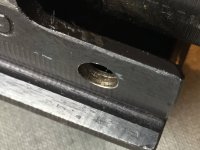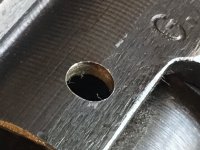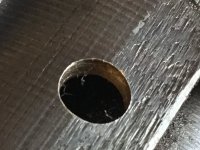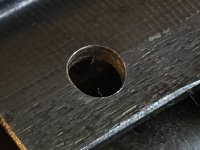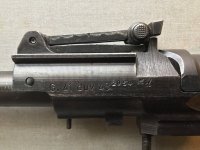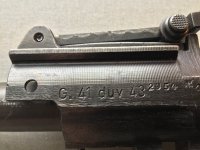GunKraut
Senior Member
Yes, but I don't believe it's chatter. Why are these marks only on the left side? As biggymu asked, why are they not going lengthwise like all the other machining marks? They look like something you would find on the slide of a pistol but they serve no purpose here.Are you talking about the chatter marks between the flat where the model info is stamped and the rear sight?
There is not a lot of room behind the hole because this is where the big end of the op rod disappears into the receiver during recoil.


